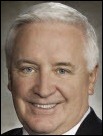Readers Write 5/29/12
Submit your article of up to 500 words in length, subject to editing for clarity and brevity (please note: I run only original articles that have not appeared on any Web site or in any publication and I can’t use anything that looks like a commercial pitch). I’ll use a phony name for you unless you tell me otherwise. Thanks for sharing!
Health Informatics [helth in-fer-mat-iks]: The Next Generation
By David Wellons
In Aaron Bordofe’s excellent article on May 15 discussing healthcare informatics, he accurately describes the struggle I’ve had defining and developing solutions that provide answers to improving information flow in healthcare so that it benefits the patient, provider, and payer.
I was the director of healthcare marketing for a large telecommunications company. From my prior decade of HIT experience in PMS/billing, EMR/PHR, and QM/UM/CM/DM systems, I worked on solutions for the NHIN and RHIO structures in the 1998-2006 timeframe. Those RHIO concepts have evolved into the current health information exchange (HIE).
One issue I then struggled with was the answer to a simple question. If my entire medical history from all 25+ disparate providers I’ve seen during my life was available in electronic format, just what meaningful clinical information would need to be displayed to a provider seeing me for the first time? What information would they be willing to wade through in order to treat me?
My conclusion was this: show them my current diagnoses, current medications, and recent vital signs. That would give them a starting point as a basis of treatment. My tonsillectomy at age 5 would not be of interest.
I still felt that something was missing from this data mix. I have only recently discovered the answer: provide the doctor with care and treatment opportunities based on my analyzed clinical information.
What if the system displaying the data to the provider also analyzed the data and, noting a diagnosis of diabetes, calculated that I had not had a foot exam and A1c and microalbumin tests in the last 12 months, and prompted the provider to perform them? I would get better care and the provider would have the incentive to review my consolidated record because it would allow them to practice better medicine and would present revenue opportunities to them. The payors would not object since, in the long run, their members would be healthier.
Where would I get reliable, meaningful clinical information that my caregiver and I could use to improve my health? First and foremost would be the EMR systems of providers, available through HIE networks and direct interfaces. Natural language processing (NLP) could be used to read transcribed notes, extract additional data values, and add lab and pharma data to complete the record.
Claims information would be a source of last resort. It would be used only to round out the record due to its great latency in receipt and unreliability as a source of accurate medical information.
Then, perform the analytics and display it to the provider.
The benefits of such a system to all three parties in healthcare would be immense. Add to this the ability to compile and monitor the progress of patients with certain disease states across all caregivers and our overall national health levels would benefit greatly. Another major benefit would be the measurement, reporting, and statistical capabilities that are a natural by-product of such a solution to support PCMH and ACO programs.
David Wellons is a 25-year veteran of the HIS industry involved in sales, marketing, and product development of solutions for payers and providers.















The article about Pediatric Associates in CA has a nugget with a potentially outsized impact: the implication that VFC vaccines…